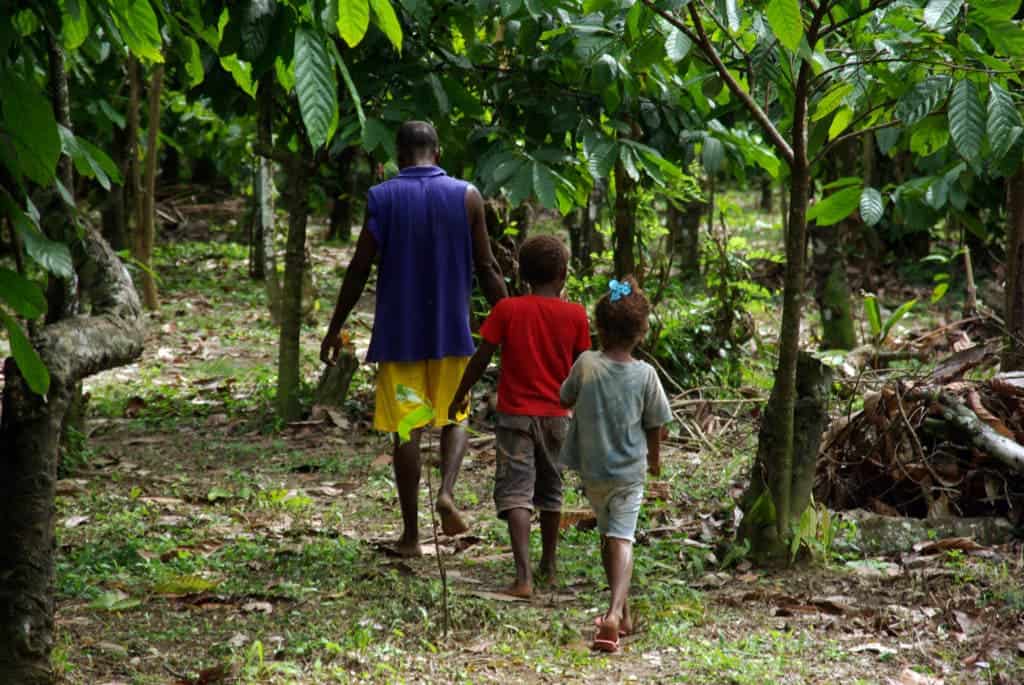We all love cocoa and chocolate, but there’s a massive hidden cost to it: slavery. In 2001, an analysis found that 19,000 children working in Côte d’Ivoire, the world’s biggest producer of cocoa, may have been victims of trafficking or slavery. In Western Africa, which produces more than two thirds of the world’s cocoa, the situation isn’t much better. Despite some improvements, the cocoa industry remains riddled with slavery problems.
A new study finds that this issue could be addressed through a cocoa price increase. Just 2.8% could potentially eliminate the worst case of child slavery, while up to 47% could eliminate all child labor from cocoa production.

Cocoa farmer walks through his cocoa farm with son and daughter. Photo taken by Irene Scott for AusAID.
The world can’t get enough of chocolate. Americans eat 18% of the world’s chocolate, but per capita, they don’t even come close to the Swiss, the Germans, and most of Europe for that matter. As China and the rest of the developed world continue to increase the standard of living, it’s also starting to sink its teeth into chocolate, further increasing the demand on cocoa plantations. Yet as the chocolate industry grows and prospers, the growers rarely see the fruit of their work. A recent report found that 2.1 million children in West Africa “still do the dangerous and physically taxing work of harvesting cocoa” for little or no money — that’s in addition to all the adults working in similar conditions.
In Ghana, a country of 25 million people, it’s estimated that some 800,000 families are living in part by cocoa farming. Ghana, the world’s second largest cocoa producer, prohibits child labor. However, that law is rarely applied. Many cocoa households live in poverty, working on small farms and barely making ends meet — they need children to earn enough to survive. To make matters even worse, this creates a vicious cycle: working children don’t get an education and are almost doomed to a life of poverty.
In this new study, the authors analyzed economic and policy data, creating a model to calculate the necessary price increase of cocoa in order to eliminate different types of child labor at household-farms. The model suggests that the worst types of child labor could be eliminated by a mere 2.81% price increase, while also eliminating regular work would come at a 11.81% increase. Meanwhile, removing all forms of child labor would cause a price increase of 46.96%.
However, the model has some important caveats: for starters, it assumes that the tax would go to the households and would be used to eliminate child labor. This is an optimistic assumption — and if cocoa farmers were not compensated for removing child labor, it just wouldn’t happen.
There’s also another issue: the study did not analyze whether clients are willing to pay this premium and through what mechanism the money could go to the farmers. These are all pressing issues to be solved.
The study was published in PLoS ONE.









